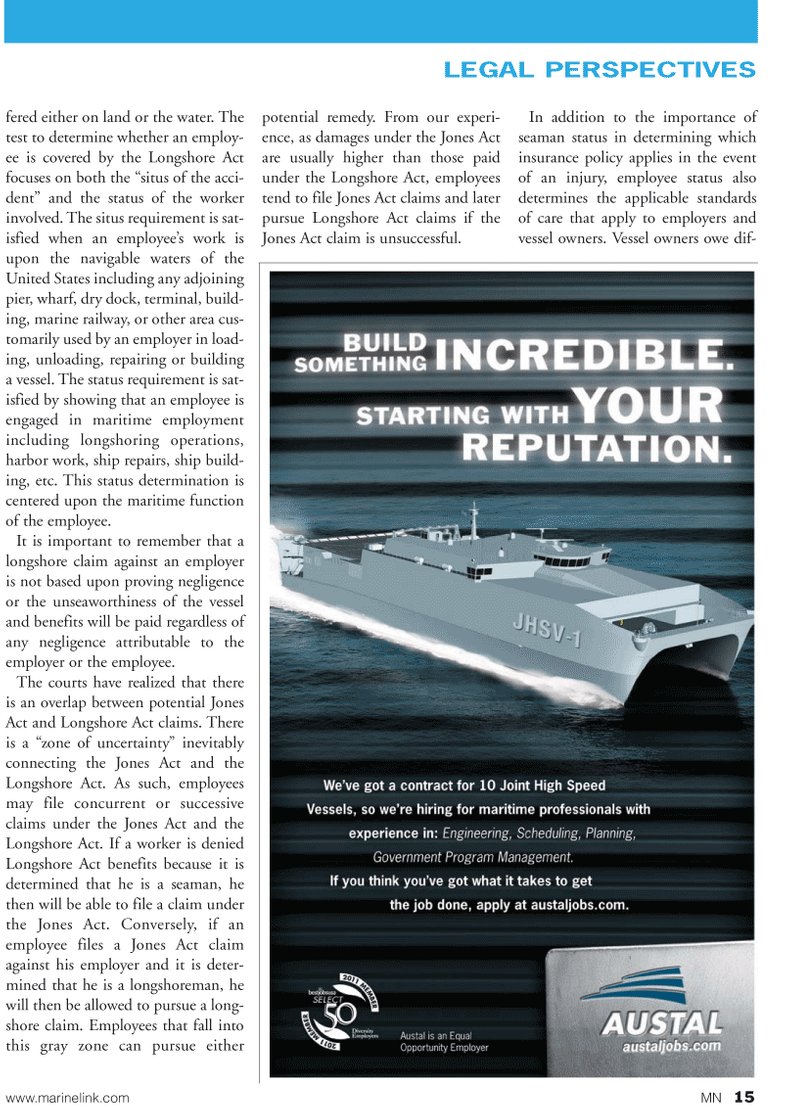
Page 15: of Marine News Magazine (December 2010)
Great Ships of 2010
Read this page in Pdf, Flash or Html5 edition of December 2010 Marine News Magazine
www.marinelink.com MN 15 fered either on land or the water. The test to determine whether an employ- ee is covered by the Longshore Act focuses on both the “situs of the acci- dent” and the status of the worker involved. The situs requirement is sat- isfied when an employee’s work is upon the navigable waters of the
United States including any adjoining pier, wharf, dry dock, terminal, build- ing, marine railway, or other area cus- tomarily used by an employer in load- ing, unloading, repairing or building a vessel. The status requirement is sat- isfied by showing that an employee is engaged in maritime employment including longshoring operations, harbor work, ship repairs, ship build- ing, etc. This status determination is centered upon the maritime function of the employee.
It is important to remember that a longshore claim against an employer is not based upon proving negligence or the unseaworthiness of the vessel and benefits will be paid regardless of any negligence attributable to the employer or the employee.
The courts have realized that there is an overlap between potential Jones
Act and Longshore Act claims. There is a “zone of uncertainty” inevitably connecting the Jones Act and the
Longshore Act. As such, employees may file concurrent or successive claims under the Jones Act and the
Longshore Act. If a worker is denied
Longshore Act benefits because it is determined that he is a seaman, he then will be able to file a claim under the Jones Act. Conversely, if an employee files a Jones Act claim against his employer and it is deter- mined that he is a longshoreman, he will then be allowed to pursue a long- shore claim. Employees that fall into this gray zone can pursue either potential remedy. From our experi- ence, as damages under the Jones Act are usually higher than those paid under the Longshore Act, employees tend to file Jones Act claims and later pursue Longshore Act claims if the
Jones Act claim is unsuccessful.
In addition to the importance of seaman status in determining which insurance policy applies in the event of an injury, employee status also determines the applicable standards of care that apply to employers and vessel owners. Vessel owners owe dif-
LEGAL PERSPECTIVES

 14
14

 16
16
